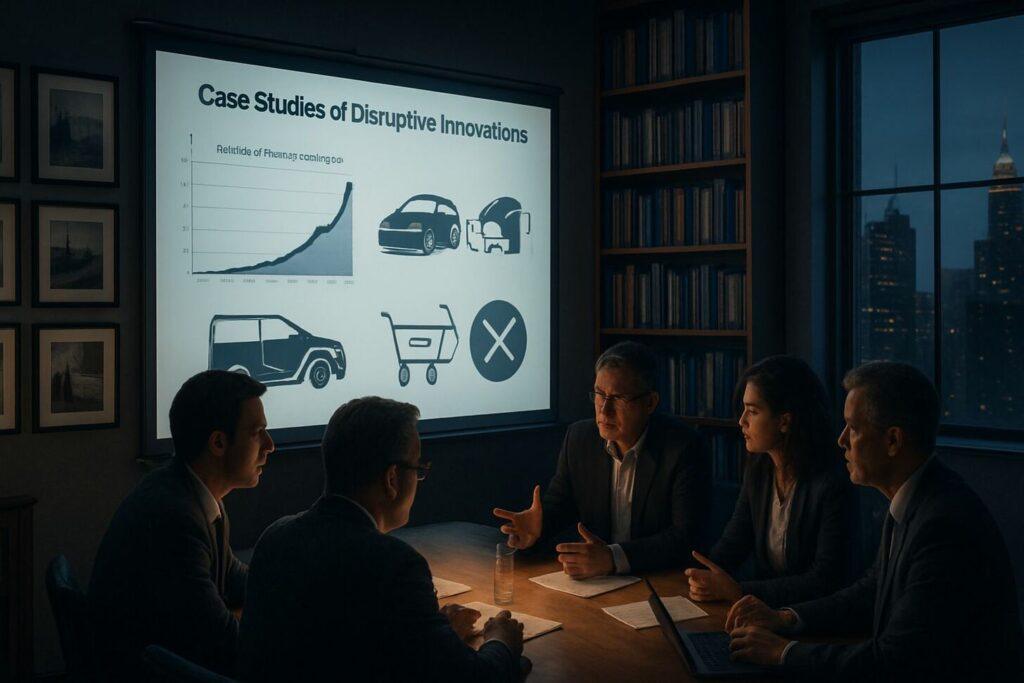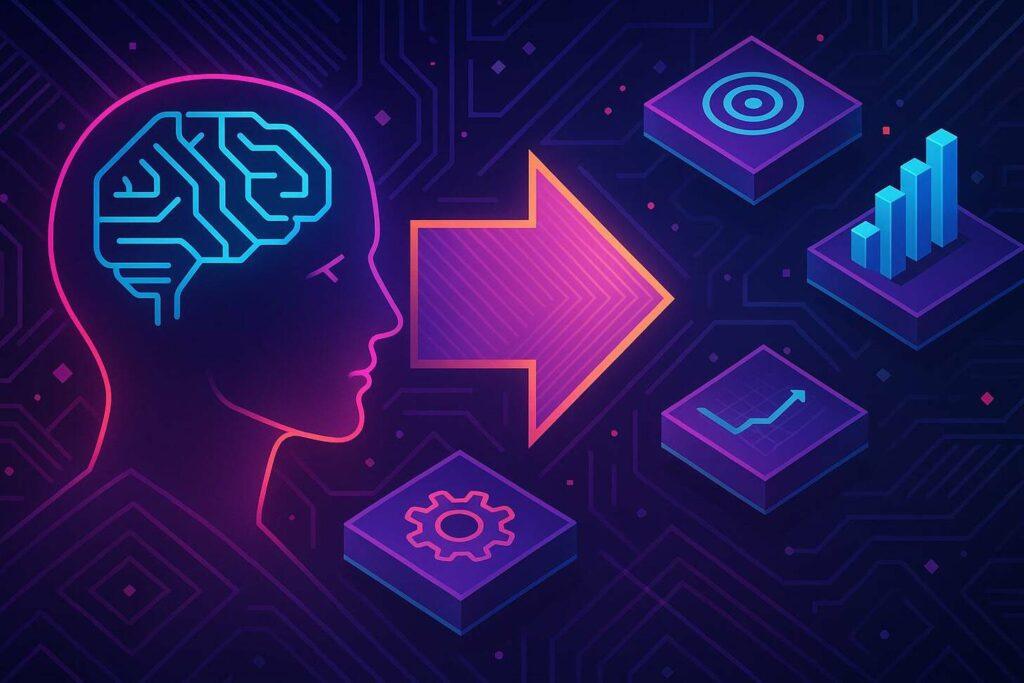Imagine flipping a light switch and suddenly seeing colors you never knew existed. That’s what happens when we adopt a paradigm shift mental model—a complete overhaul in how we interpret information. It’s not just changing opinions. It’s rebuilding the lens through which we view problems, opportunities, and progress.
Thomas Kuhn first popularized this concept in science, showing how Einstein’s relativity theory replaced Newtonian physics. Today, it explains why companies like Blockbuster failed while Netflix thrived during digital transformation.
When old frameworks clash with new evidence, clinging to tradition becomes a liability.
Research by the National Bureau of Economic Research (NBER) proves industries embracing these transitions grow 25% faster. Joel Barker’s work on innovation echoes this: leaders who spot emerging patterns outpace competitors.
From personal growth to tech breakthroughs, recognizing when to abandon outdated ideas separates stagnation from evolution.
Key Takeaways
- Paradigm shift mental model: Fundamentally changing how we approach problems, not just adjusting details
- Historical examples include Einstein’s physics theories and the digital revolution
- Businesses adapting to major changes grow faster (NBER data shows 25% higher growth)
- Personal growth requires questioning long-held assumptions when they stop working
- Visionaries like Thomas Kuhn and Joel Barker mapped how these transitions reshape industries
Paradigm Shift Mental Model Introduction
Think of a map that suddenly reveals hidden paths you never noticed. That’s how paradigm shifts work—they rewrite the rules we unconsciously follow. Joel Barker called these frameworks “the way we see the world.” Like invisible guardrails, they shape how we solve problems, communicate, and even dream.
Defining a Paradigm Mental Model and Its Shifts
A paradigm mental model is like a playbook everyone uses without questioning. It’s why people once believed the sun revolved around Earth. But when new evidence emerges—like climate change or AI breakthroughs—old ideas crack.
This change isn’t just swapping one fact for another. It’s rebuilding entire systems of thought and creating new mental models.
Remember when video rentals seemed permanent? Blockbuster’s leaders couldn’t imagine streaming. Their playbook failed because reality shifted. Thomas Kuhn observed this in science: progress happens when we abandon comfortable theories and models for better ones.
Why Paradigm Mental Model Shifts Matter in the Modern Era
Today’s challenges demand fresh ways of thinking. Industries from healthcare to finance face 5x faster changes than in the 1990s. Research shows teams embracing new mental models and adapting to paradigm shifts solve problems 40% quicker. But it’s hard—our brains fight unfamiliar ideas like an immune system attacking germs.
Ever argued with a friend about politics or technology? That tension often stems from clashing paradigms among people. The key isn’t to “win,” but to ask: “What if we’re both missing a bigger picture?”
Adapting isn’t about smarts—it’s courage to question what “everyone knows.” Companies that foster this adaptability will elevate their level of innovation.
Next, we’ll explore how historical breakthroughs and modern businesses master this skill—and how you can too.
Historical Perspectives and Key Theories

Imagine solving a puzzle only to realize the pieces form a different picture than expected. That’s how groundbreaking ideas and paradigm mental model shifts reshape our understanding of reality.
History shows that the process of change often begins when old rules no longer fit new discoveries, challenging people and companies to adapt.
The Evolution from Newtonian to Einsteinian Thinking
For centuries, Newton’s laws explained motion and gravity perfectly—until they didn’t. When scientists noticed Mercury’s odd orbit, Einstein proposed relativity: time and space bend around mass. This change wasn’t an update—it rewrote physics entirely.
Thomas Kuhn and the Scientific Revolution
In 1962, Kuhn argued science doesn’t advance smoothly. Instead, crises force “revolutions” where old systems collapse. His book revealed how communities cling to familiar models until evidence becomes undeniable. Like when germ theory replaced miasma beliefs in medicine.
Influence of Early Innovators on Paradigm Change
Pioneers like Galileo and the Wright Brothers faced ridicule for challenging norms. Yet their risks created ripples we still feel today. Modern tech giants follow this pattern—Netflix didn’t just improve video rentals; it reimagined entertainment delivery.
These shifts didn’t just alter science. They laid groundwork for today’s business innovations. Every industry leader faces a choice: protect the past or build the future.
Paradigm Shift: Key Principles & Frameworks
Picture wearing glasses that reveal hidden patterns in everyday chaos. That’s how frameworks shape our thinking—they filter what we notice and ignore. Joel Barker called these systems “the invisible water” we swim in, shaping decisions without us realizing it.
Paradigm Shift Mental Model: Core Concepts and Definitions
Every process we use—from solving math problems to launching products—relies on mental shortcuts. These strategies help us act quickly, but they can blind us to better options. Think of Netflix: they stopped mailing DVDs because they saw streaming as the future, not just a tech upgrade.
Key Frameworks and Rules that Guide Paradigms
Three rules drive major shifts:
- Question assumptions: Kodak invented digital cameras but clung to film
- Follow evidence, not tradition: Doctors now use AI diagnostics alongside experience
- Reward curiosity: Google’s “20% time” policy sparked Gmail and Maps
Ever wonder why some teams innovate faster? They treat ideas like Lego blocks—constantly rebuilding. A leader’s job isn’t to have all answers, but to create spaces where new patterns emerge.
Try this: Next meeting, ask “What if we’re wrong?” You’ll spot outdated rules hiding in plain sight. Up next—how these frameworks explode growth in unexpected ways.
Impact on Business Growth and Innovation

Picture a ship’s captain steering through fog only to discover a faster route home. That’s what happens when companies embrace radical change.
Research shows businesses that rewrite their playbooks outperform those clinging to old maps, especially during paradigm shifts that require effective communication among people at every level.
NBER and McKinsey Insights on Growth and Profitability
A National Bureau of Economic study found industries adopting bold strategies grow 25% faster than peers. McKinsey’s survey adds color: firms making dramatic pivots see 72% higher profitability. Why? Incremental tweaks rarely solve modern problems.
Digital Transformation and Radical Business Models
Remember when Blockbuster laughed at Netflix’s DVD-by-mail idea? Today, streaming dominates entertainment. Amazon didn’t just sell books—it reimagined retail. These companies didn’t “improve”—they rebuilt.
Three lessons from top performers:
- Reward teams questioning “how we’ve always done things”
- Invest in learning systems, not just tools
- Measure success by future readiness, not past metrics
What separates the winners from the rest? They treat ideas like seeds—nurturing the strange ones that might grow into redwoods. Your turn: Which outdated rule is your company still following?
Overcoming Biases and Emotional Resistance
Like fogged-up glasses distorting your view, biases cloud our ability to see new possibilities. Our brains cling to familiar patterns—even when they stop working. Let’s explore why this happens and how to clear the lens.
Why We Fight New Ideas
Confirmation bias makes us favor information that matches existing beliefs. Remember when Galileo’s telescope showed moons orbiting Jupiter? Critics refused to look—it threatened their Earth-centered worldview. Status quo bias works similarly. Charlie Munger called this the “Lollapalooza effect,” where multiple biases combine to resist change.
Emotions vs. Progress
Ever ignored feedback that challenged your views? That’s emotional resistance in action. Fear of uncertainty often feels safer than exploring unknowns. A 2022 Yale study found teams embracing discomfort solved complex problems 3x faster than those avoiding tough conversations.
| Bias | Real-World Example | Solution |
|---|---|---|
| Confirmation | Ignoring climate data that contradicts political views | Seek opposing perspectives weekly |
| Status Quo | Sticking with outdated software to avoid retraining | Schedule quarterly “challenge assumptions” days |
| Anchoring | Judging new ideas based on first impressions | Use 24-hour reflection rule before deciding |
Try this today: When facing resistance—yours or others—ask, “What are we protecting?” Often, it’s comfort rather than truth. Growth happens when we trade safe assumptions for brave curiosity.
Real-World Applications and Case Studies

Ever wonder why some ideas flip entire industries upside down? Let’s explore how bold thinking and new mental models reshape everything from boardrooms to breakfast tables in a company setting. Real stories show how breaking old paradigms creates new possibilities in life.
When Old Systems Meet New Solutions
Take electric cars. In 2006, experts laughed at Tesla’s goal to replace gas engines. Today, 1 in 7 new U.S. cars plugs in. Why? They didn’t just make better vehicles—they reimagined transportation as clean energy hubs.
Science offers clear examples too. For decades, doctors treated stomach ulcers with stress reduction. Then two Australians proved bacteria caused them—winning a Nobel Prize after years of skepticism. Sometimes truth hides in plain sight.
| Industry | Old Approach | New Approach | Result |
|---|---|---|---|
| Photography | Film development | Instant digital sharing | Kodak bankrupt, Instagram worth $100B+ |
| Transportation | Ownership | Ridesharing | Uber operates in 10,000+ cities |
| Retail | Physical stores | Social commerce | TikTok Shop hit $20B sales in 2023 |
Joel Barker’s Vision for Tomorrow
The researcher behind Discovering the Future famously said: “Your success tomorrow depends on spotting patterns others miss today.” He showed how Sony’s Walkman dominated music until Apple’s iPod changed the game—not through better hardware, but simpler song access.
Your local coffee shop proves this works. When Starbucks introduced WiFi, they weren’t just selling lattes—they created mobile offices. Small shifts in thinking create big waves. What daily routines could you reimagine?
Try this: Next time you face a roadblock, ask “What if we started fresh?” You might find solutions hiding behind “the way we’ve always done it.”
Conclusion
Consider a toolbox where every tool suddenly gains new functions overnight. That’s the power of rethinking how we approach business challenges and personal growth. From Einstein rewriting physics to companies like Netflix reinventing entertainment, history shows that progress demands courage to abandon outdated ideas.
Data from NBER and McKinsey proves it: organizations embracing bold change grow faster and smarter. But this isn’t just about companies—it’s about learning to spot patterns in your daily process. Joel Barker put it best: “Vision without execution is hallucination.”
Here’s your challenge this week: Pick one routine you’ve never questioned. Could a fresh perspective solve that nagging problem? Maybe it’s how you schedule meetings or approach customer feedback. Small tweaks often spark big shifts.
Remember—the world rewards those who adapt. Keep your mind flexible, your curiosity sharp, and don’t let yesterday’s rules limit tomorrow’s breakthroughs. What new standard will you create?


